Can A Custom-Fitting Help Save My Single-Figure Status?
With a double-digit handicap looming for the first time in 25 years, GM stalwart Jezz Ellwood looks to halt the slide via a full custom-fitting with Ping


Can A Custom-Fitting Help Me Save My Single-Figure Status?
I would be the first to admit that my golf swing is a long way from textbook. Many people have kindly pointed this out to me over the years! I’ve heard all the quips, including ”more planes than Gatwick” and frequent “lead boot” comments with reference to my inability to get off my right foot at impact.
The background
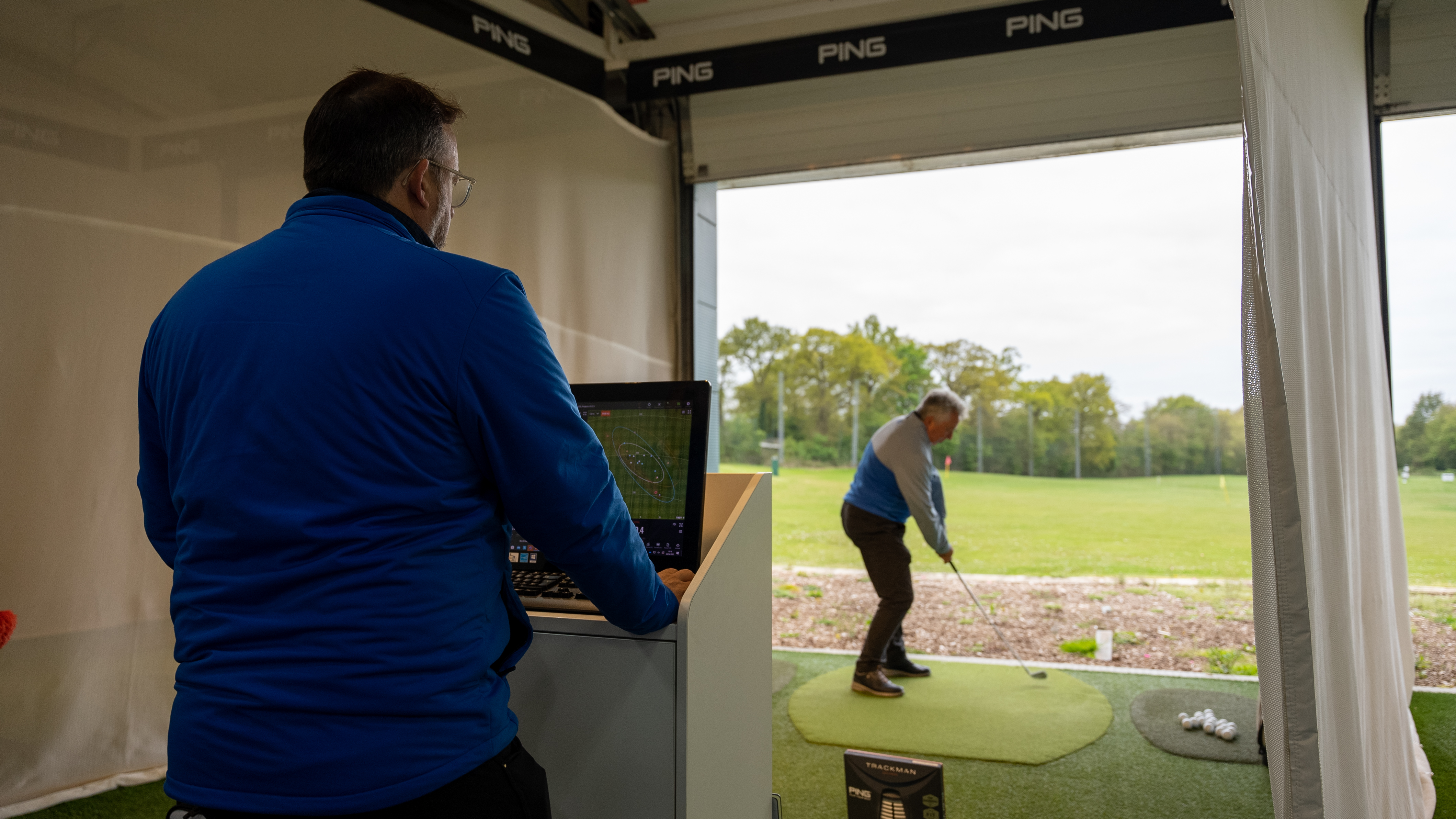
My swing has never been a thing of great beauty!
Despite this, I managed to get down to single figures some time in the mid-1990s, and have stayed there ever since, mostly somewhere between 5 and 7 and peaking at 4.7 under the old system and 4.0 very briefly when WHS came in, on account of not having many scores in the system but one or two abnormally decent ones. My ball-striking was decent; I had a good short game; I didn’t miss many fairways; my putting was by far my strongest suit; and I generally managed my way round pretty well. This meant that I broke 80 more often than not and took tongue-in-cheek delight in frustrating (and beating) those with infinitely better swings than me.
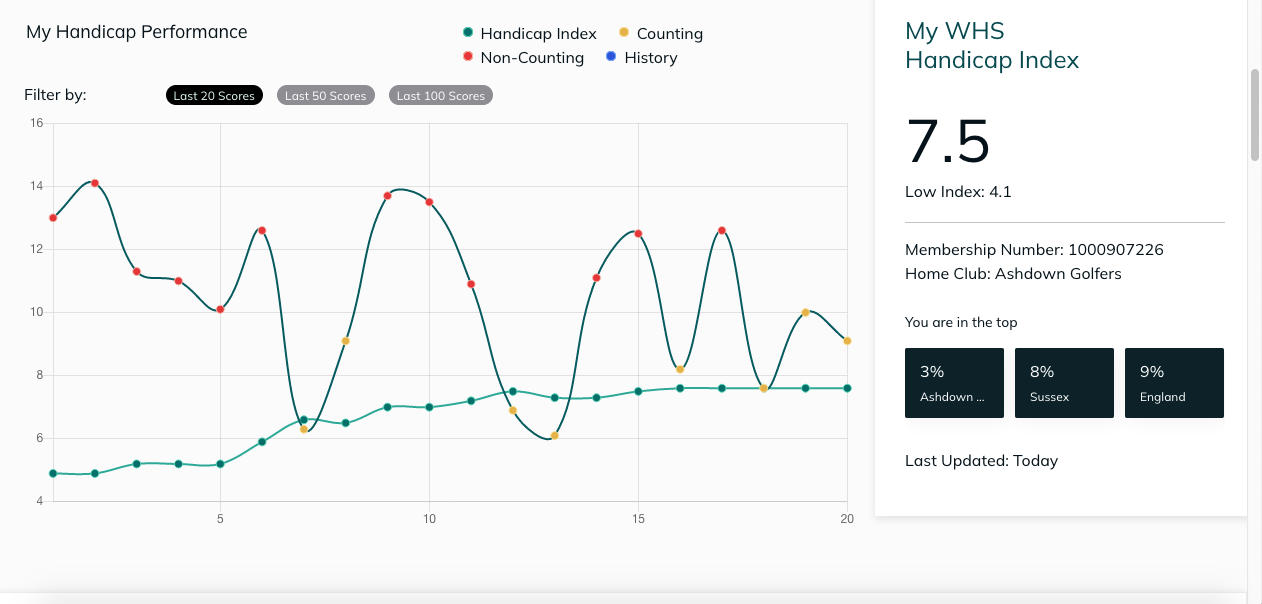
Signs of a worrying decline on the My England Golf app
I had, until late 2021, been able to brush off those mostly good-natured comments about my swing and let my scores do the talking. But now my scores weren’t talking very impressively. My game had been on the slide and, in early 2022, while staring at a string of poor scores on the MyEG golf app, it suddenly dawned on me that unless I bucked my ideas up, I was in grave danger of losing the single-figure status I’d held on to for over 25 years.
My problems
Perhaps the most alarming decline had been in my once-reliable putting. Three-putting had become unusually common, short ones were being missed with worrying regularity and I reckoned my putting was costing me about four shots per round. But it wasn’t just that – the knock-on effect was increased pressure to hit it closer, or chip it closer. That then meant being in the right place off the tee and as far down the hole as possible. In other words, there was increased pressure in all areas – pressure with which my game didn’t seem to be coping.
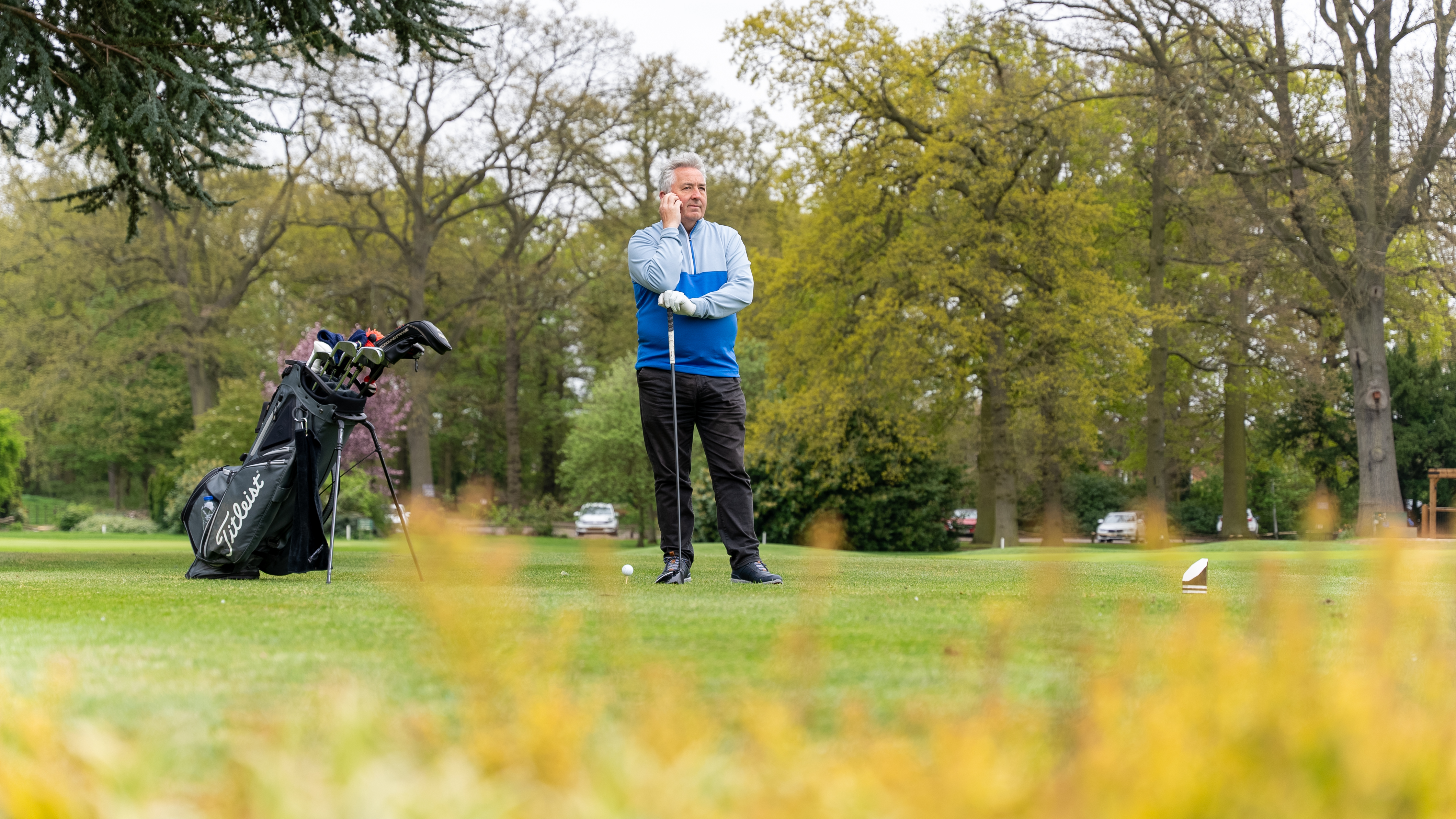
There's no doubt that my loss of form has been severely affecting my enjoyment
Should my handicap really matter that much? I didn’t want it to and am well aware that maintaining a certain standard becomes harder with age (I’m now 58). But somehow it did still matter, despite my attempts to pretend to myself that it didn't.
Drastic steps were clearly needed. Yes, I could - perhaps should - have opted for lessons. But I knew it would be a tall order devoting sufficient time to potentially ironing out decades of ingrained swing faults. Besides, my swing, as it was, had served me well enough for years, but now the pleasure of playing was waning. I just wanted to get back to enjoying golf again, so began to look into whether or not new clubs might help – for example, were the shafts I was playing no longer suitable for how I was swinging?
Get the Golf Monthly Newsletter
Subscribe to the Golf Monthly newsletter to stay up to date with all the latest tour news, equipment news, reviews, head-to-heads and buyer’s guides from our team of experienced experts.
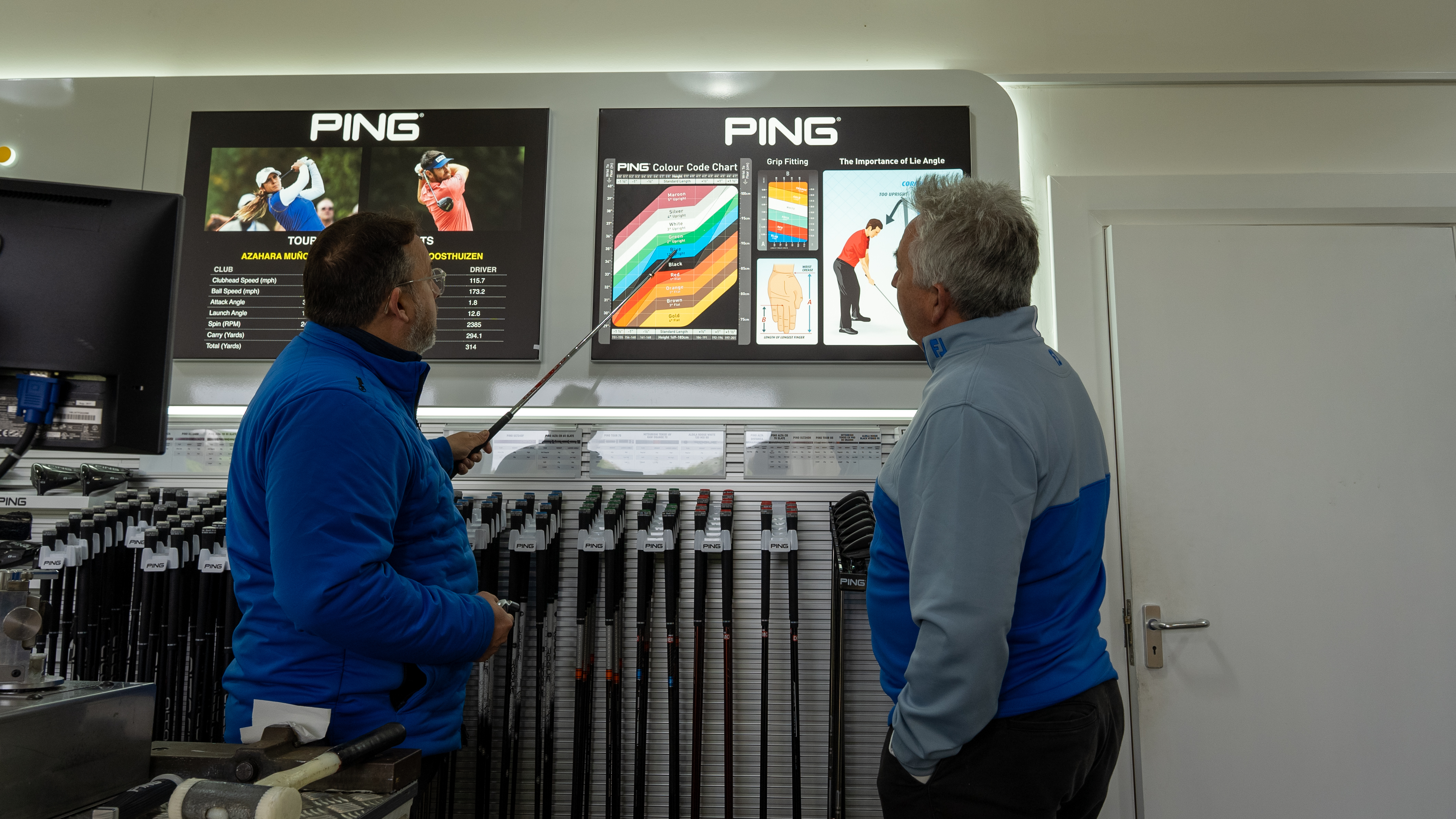
Could a full-bag custom-fitting with Ping help get my game back on track?
I enjoyed many custom-fit experiences when I was equipment editor for the magazine, but that role had ended over a decade ago and my last major custom-fitting experience had been on a Mizuno project in 2016. There had been a Titleist wedge fitting with none other than Bob Vokey himself in Portugal a year later, when I’d also had my only ever putter fitting for a Scotty Cameron, and in 2019 I was fitted for a Titleist TS3 driver.
Arccos data
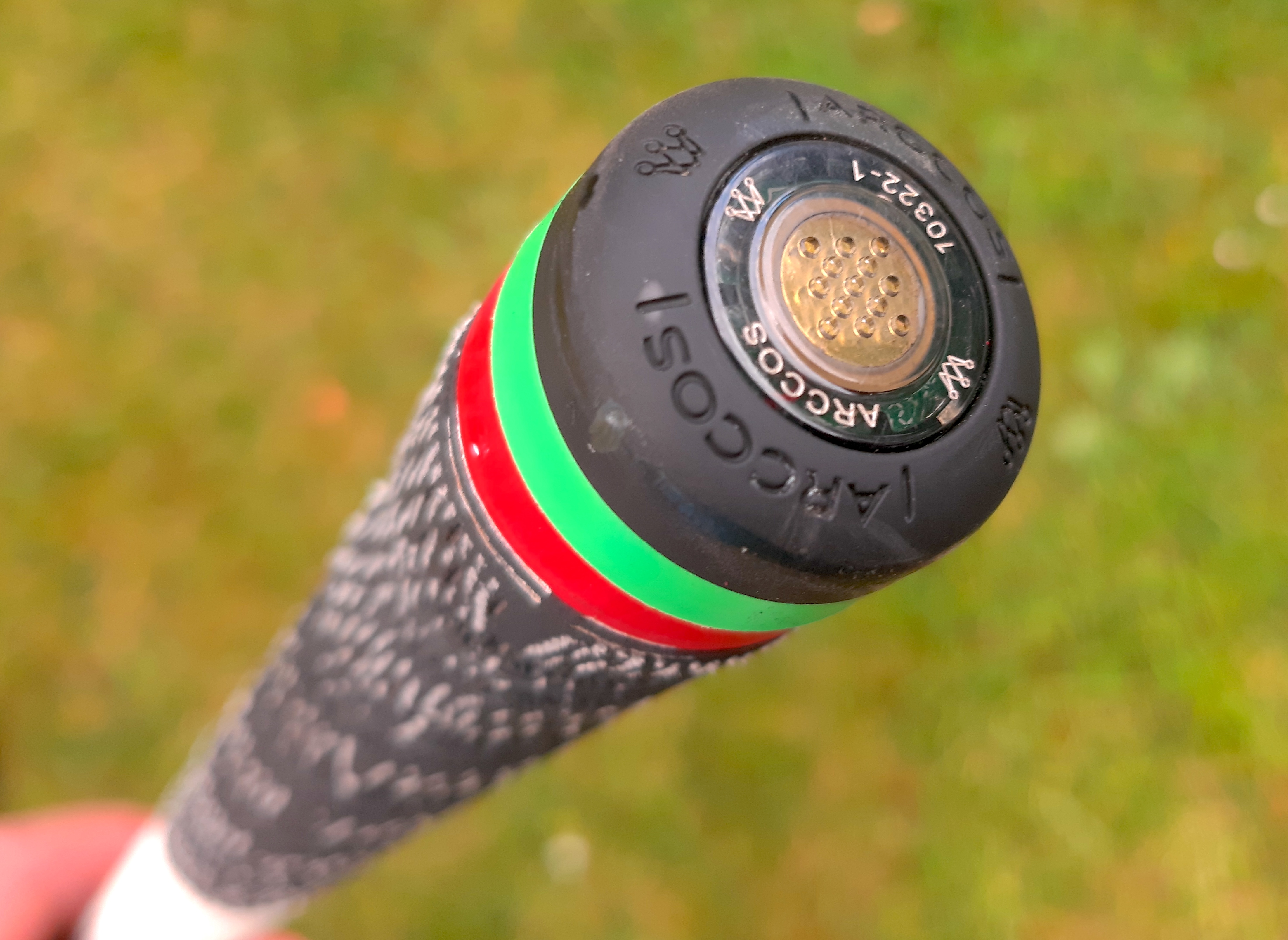
Before heading up to Ping I fitted Arccos sensors to all my clubs to get several rounds' worth of data
But before I went up to Lincolnshire, I fitted a full set of Arccos Smart Sensors Gen3+ to my clubs to help analyse my game and either confirm my hunches about where it was going wrong or perhaps shed new light on the current state of affairs. Over a number of rounds, I felt the data mostly confirmed what I already felt. My driving was okay but with too many shots cutting away too far right; I didn’t hit it close enough with my short irons; I missed too many greens short or right with my mid-irons; my chipping was still okay; but my putting had gone south, taking 35.32 putts per round and three-putting 17.5% of the time - poles apart from how I putted in my so-called heyday!
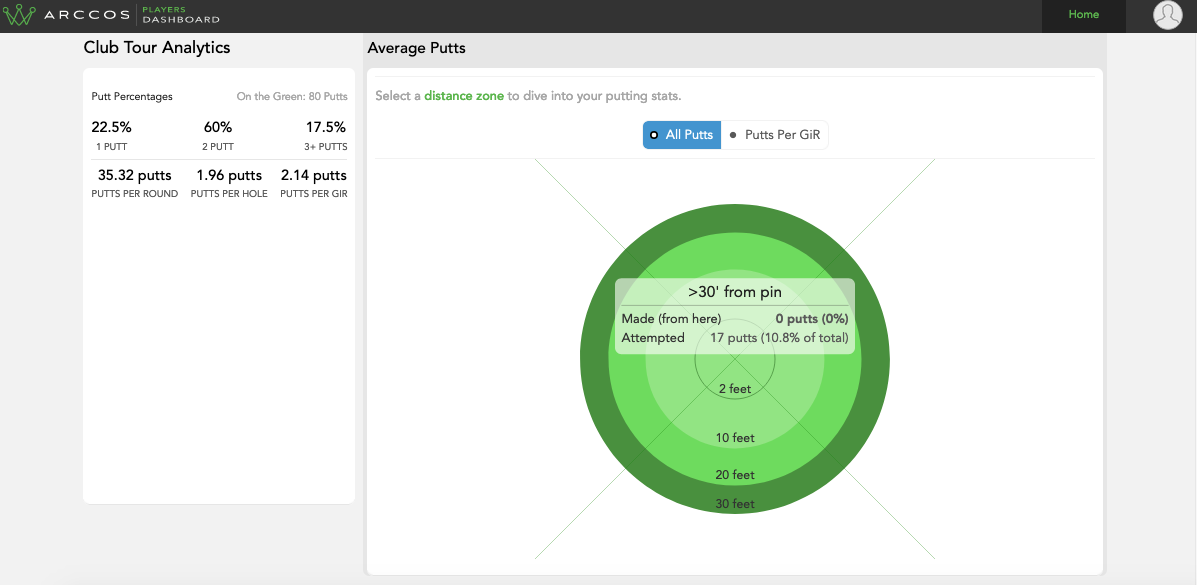
The Arccos data confirmed my worst fears about my putting - 35.32 putts per round!
The Ping fitting
Armed with that info, in late April I found myself heading up the A1 to Gainsborough and Ping’s European Fitting Centre for a full driver-to-putter custom-fitting with the brand that blazed a trail for custom-fitting long before it became more widely available and fashionable. My two-hour fitting with Nick Boulton, Ping’s European fitting and product education manager, began with the putter.
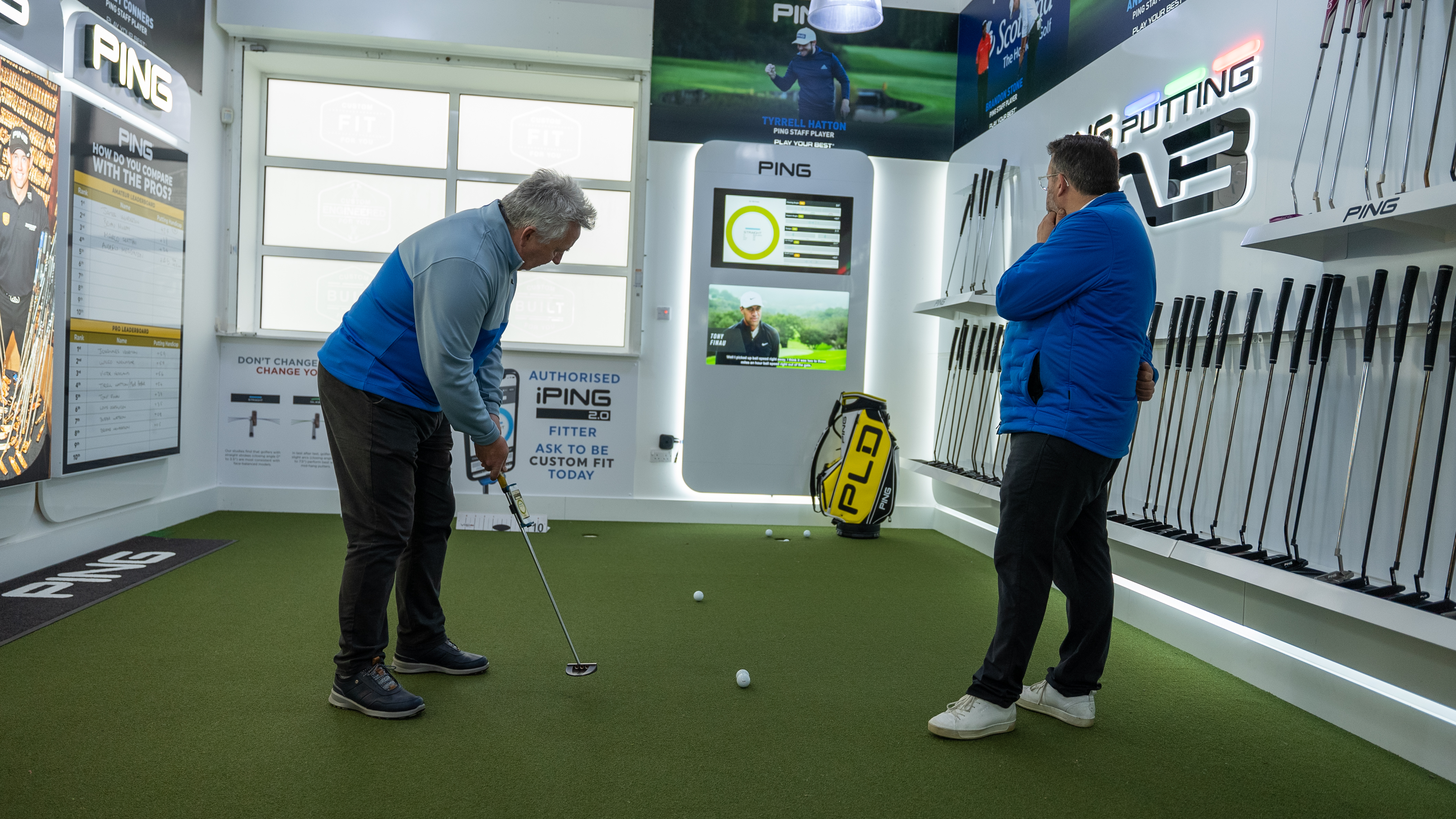
Despite the Arccos data my putting handicap came out very well with Ping's Fetch model
Nick clipped an iPod to my existing putter to gauge performance using the iPing app. It showed that a 33in shaft best suited my set-up to get my eyes over the ball, and that I needed a 2˚ flat lie angle and a putter model to suit a straight stroke arc. I was pleased that there was scope for personal preference, too, and ended up with a Ping Fetch, even though the stats showed just slightly better results with another model that didn’t suit my eye quite as well. The results showed a marked improvement on my existing putter and a putting handicap not far from scratch!

I was pleased when Nick recommended the i525 as its looks had caught my eye when it was unveiled
After checking my height and wrist-to-floor measurements to find the right Ping lie angle, we then moved on to irons, with the i525 model outperforming the G425 for me - good news as I definitely preferred its looks! It was then a matter of looking at the Trackman data to find the shaft that not only delivered the most consistency but also felt right to me. In the end, a mid-weight 105g Dynamic Gold R300 shaft provided the best results and helped to neutralise my bad shot - high, short and right - to the greatest degree.

Nick checking out my chipping action to find the right wedge set-up for my game
From my 7-iron data (launch angle, spin rates etc) Nick then used Ping’s gapping tool to work out an ideal full-bag line-up for me, asking what my longest fairway wood was and how many wedges I liked to use. I’m unusual in that my highest-lofted wedge is 54˚, primarily because I hit my wedges pretty high and feel I can do everything I need to do in terms of sand and lob shots with that 54˚ model. After watching me hit a variety of short-game and bunker shots around the fitting centre’s practice green, Nick was happy for me to carry on with that line-up, adding 50˚ and 54˚ Glide 4.0 wedges (both with 12˚of bounce in the standard sole grind due to my shallow angle of attack and personal preference) to my i525 3-PW line-up.
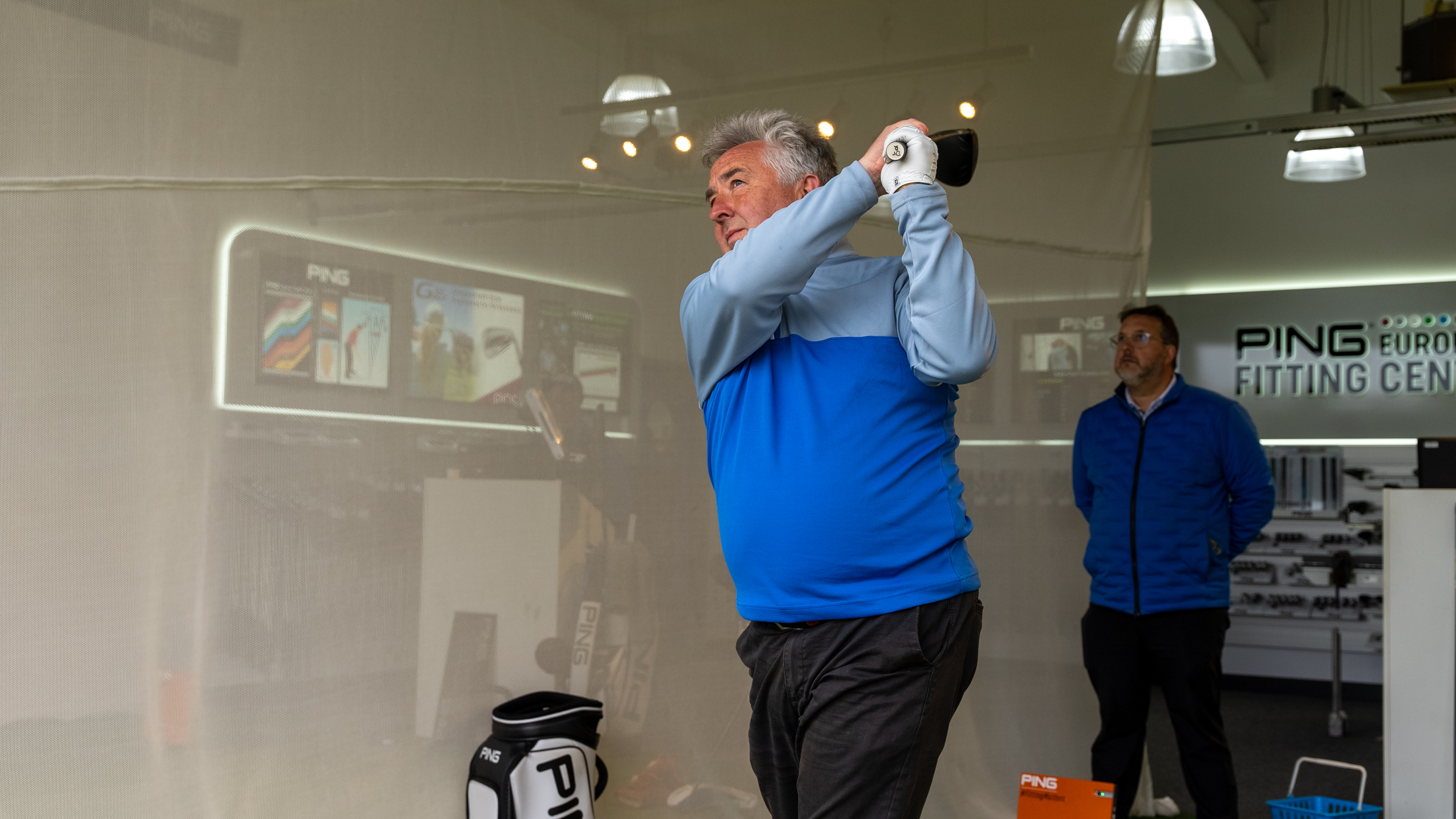
The G425 LST driver in the right shaft helped get my spin rates down
Finally, to the long end of the bag, and after a few shots with my existing driver to check the data, we tried various G425 model and shaft combinations, ending up with a little more loft and Ping’s G425 LST head in a draw setting to help lower the spin rates that were hurting me. After first trying a softer shaft, we ended up going a little stiffer in the end (Mitsubishi Tensei CK Pro Orange 80 S), as this helped to further optimise my spin rates.
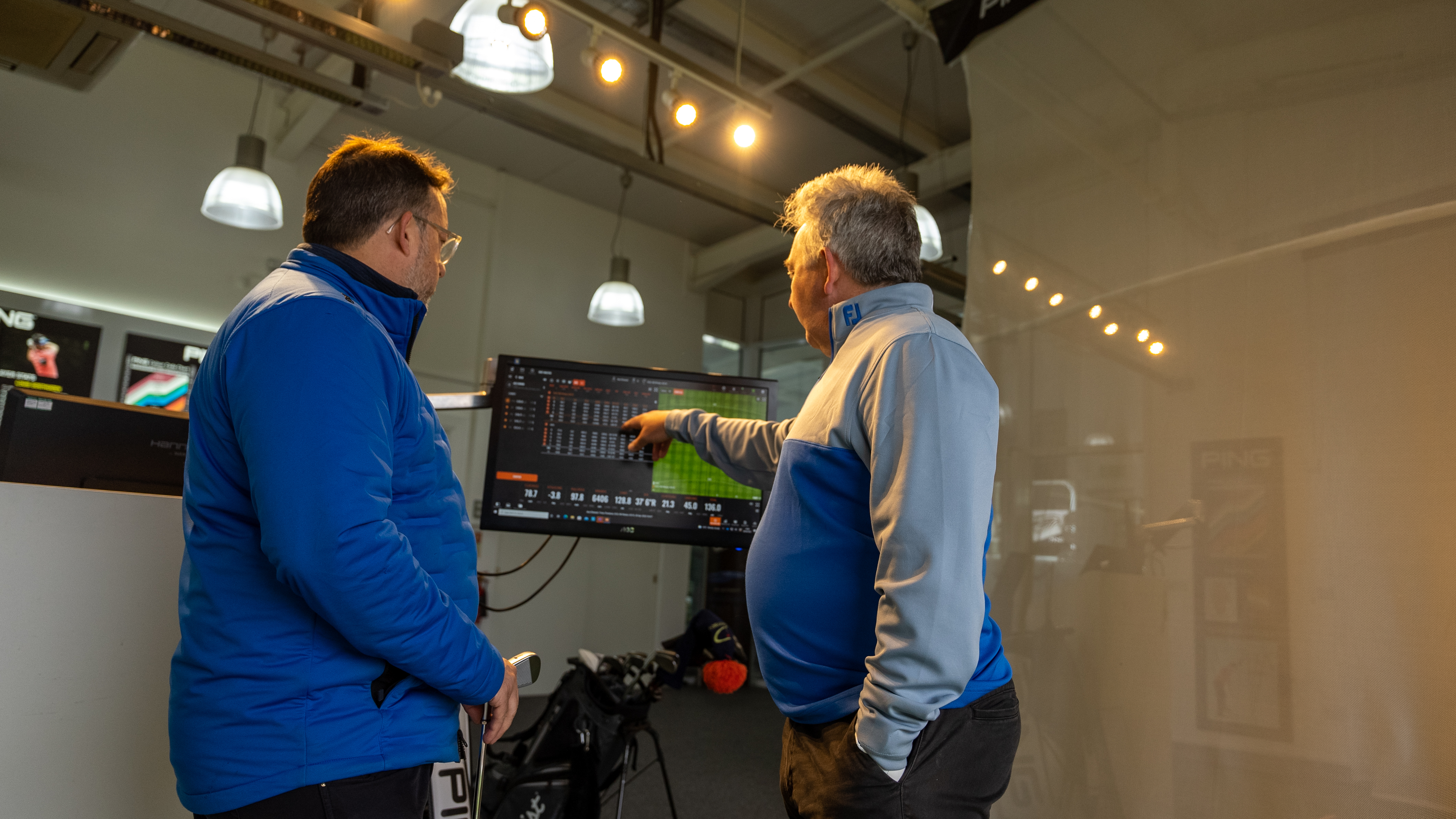
Nick explained what all the Trackman date meant throughout the fitting
Completing the line-up were a G425 3-wood and 17˚ hybrid, both with a similar shaft to the driver. In the 3-wood, we went 1˚ flat, which helped address my tendency to get it a little out of the neck. Nick also added a little more loft to give me more chance of turning it over slightly, which I would like to do. I felt this then flew a little high but Nick liked the flight, so the proof of the pudding will be in the on-course performance, although I will happily admit I’m not a very good fairway wood player anyway! Nick was happy to grant my wish for a strong 2-hybrid to sit between 3-wood and 3-iron, again flattening the lie angle by 1˚ to help me find the middle of the face more often.
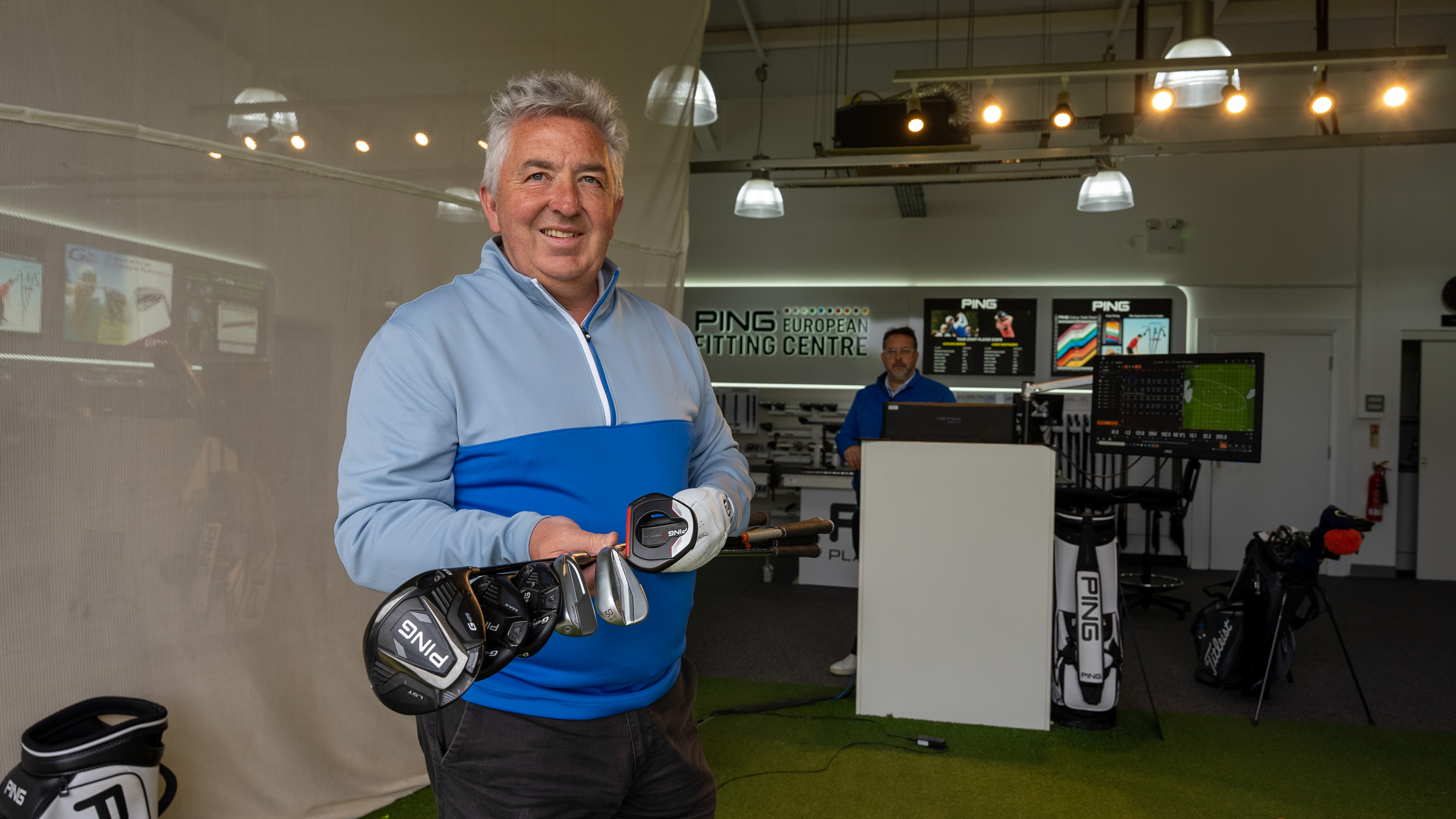
Will my new Ping line-up help change my fortunes on the course...?
So, there we have it – a full new line-up of Ping clubs to help in ‘Operation Avoid Double Figures’. My gleaming new sticks arrived within a week and are ready to go any day now. I’ll be reporting back in due course once I’ve got a few rounds under my belt and have studied the ‘before and after’ Arccos data to give me a clear picture of how things are going. I’m feeling confident, so we shall see…

Jeremy Ellwood has worked in the golf industry since 1993 and for Golf Monthly since 2002 when he started out as equipment editor. He is now a freelance journalist writing mainly for Golf Monthly. He is an expert on the Rules of Golf having qualified through an R&A course to become a golf referee. He is a senior panelist for Golf Monthly's Top 100 UK & Ireland Course Rankings and has played all of the Top 100 plus 91 of the Next 100, making him well-qualified when it comes to assessing and comparing our premier golf courses. He has now played 1,000 golf courses worldwide in 35 countries, from the humblest of nine-holers in the Scottish Highlands to the very grandest of international golf resorts. He reached the 1,000 mark on his 60th birthday in October 2023 on Vale do Lobo's Ocean course. Put him on a links course anywhere and he will be blissfully content.
Jezz can be contacted via Twitter - @JezzEllwoodGolf
Jeremy is currently playing...
Driver: Ping G425 LST 10.5˚ (draw setting), Mitsubishi Tensei AV Orange 55 S shaft
3 wood: Srixon ZX, EvenFlow Riptide 6.0 S 50g shaft
Hybrid: Ping G425 17˚, Mitsubishi Tensei CK Pro Orange 80 S shaft
Irons 3- to 8-iron: Ping i525, True Temper Dynamic Gold 105 R300 shafts
Irons 9-iron and PW: Honma TWorld TW747Vx, Nippon NS Pro regular shaft
Wedges: Ping Glide 4.0 50˚ and 54˚, 12˚ bounce, True Temper Dynamic Gold 105 R300 shafts
Putter: Kramski HPP 325
Ball: Any premium ball I can find in a charity shop or similar (or out on the course!)
-
 Top LIV Golfer? Top Lefty? Leading Amateur? 8 Alternative Masters Leaderboards After Day One At Augusta National
Top LIV Golfer? Top Lefty? Leading Amateur? 8 Alternative Masters Leaderboards After Day One At Augusta NationalJustin Rose leads after the first round of The Masters and, at the first Major of the year, plenty of players have already displayed strong showings at Augusta National
By Matt Cradock Published
-
 LIV Golf Leaderboard At The Masters: DeChambeau And Hatton Lead The Way As Rahm Struggles
LIV Golf Leaderboard At The Masters: DeChambeau And Hatton Lead The Way As Rahm StrugglesBryson DeChambeau and Tyrrell Hatton lead the way for LIV players after 18 holes at Augusta National
By Elliott Heath Published